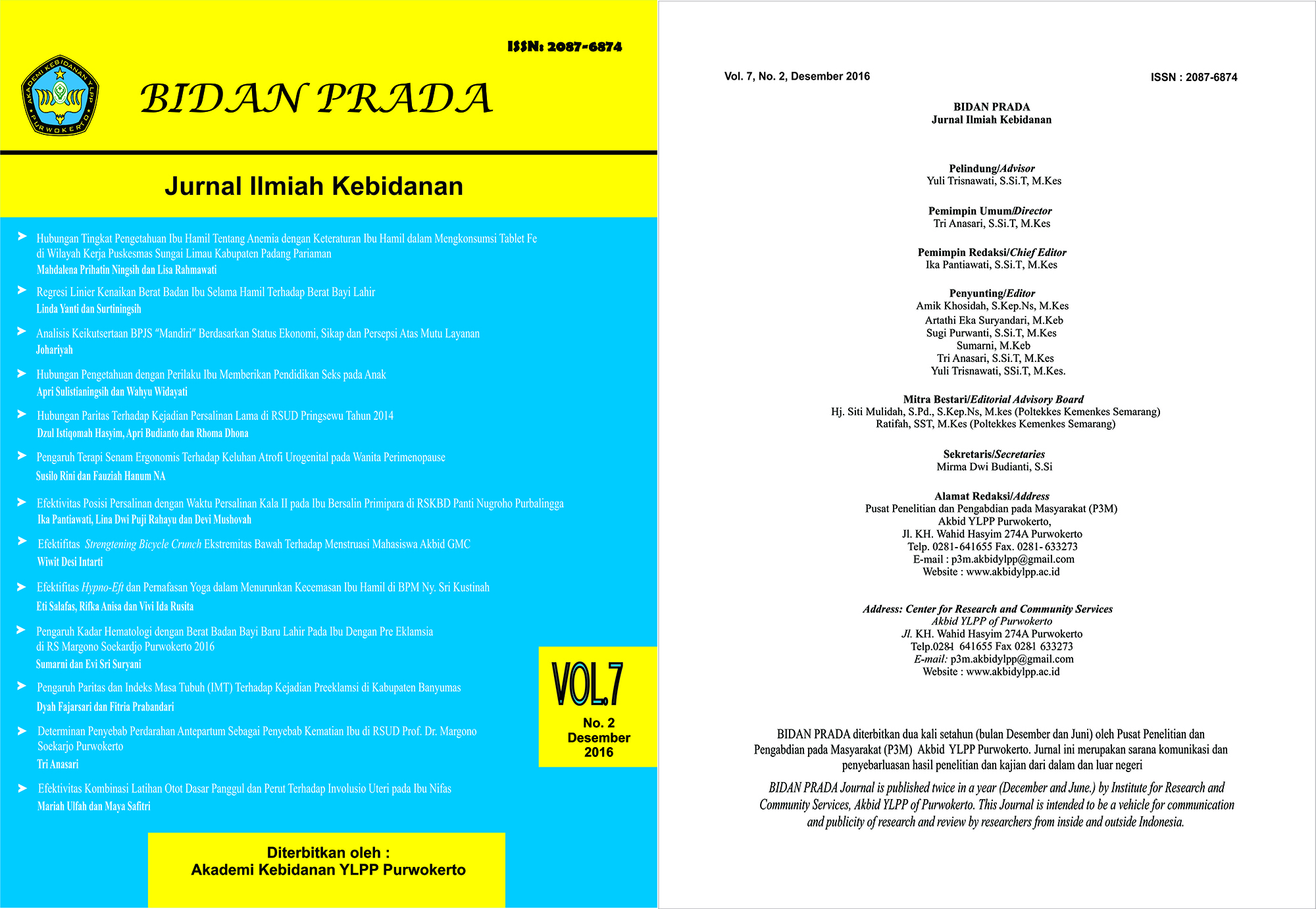PENGARUH TERAPI SENAM ERGONOMIS TERHADAP KELUHAN ATROFI UROGENITAL PADA WANITA PERIMENOPAUSE
Abstract
Indonesia's population in 2020 was estimated at 262.6 million, with the number of postmenopausal women around 30.3 million people, which may experience estrogen deficiency syndrome (syndrome menopause), one of which is complaints urogenetalia atrophy. Complaints can be eliminated the use of motion exercises using the body of one ergonomic gymnastics Therefore, the research aims to determine the effectiveness of exercise therapy ergonomically against urogenital atrophy complaints in perimenopausal women. This study design using Quasi-experiment, the research design nonequivalent control group design. The sampling technique used purposive sampling with a sample of 23 experimental group and the control group 21. Instrument to assess the effects of exercise therapy are ergonomic observation sheet. Two different statistical tests mean Paired T test to test the hypothesis and significance level of 95% (alpha 0.05), test the effect using linear regression. The results of the study decrease complaint urogenital atrophy is greater in the experimental group 5.78% or 1.1 times compared to the control group. There was a decrease complaint urogenital atrophy in women after given perimenopause gymnastics gymnastics ergonomic ergonomic Effect of only 0.6% on variable complaints urogenital atrophy, and 99.4% are influenced by other factors. Gymnastics ergonomic if done consistently and continuously, potentially offering excellent benefits for health especially in matters of complaints in the area of ??the pelvic muscles, there by reducing some of the complaints in women premonopause.
Keywords: Gymnastics Ergonomics, Atrophy Urogenetalia, Perimenopause









